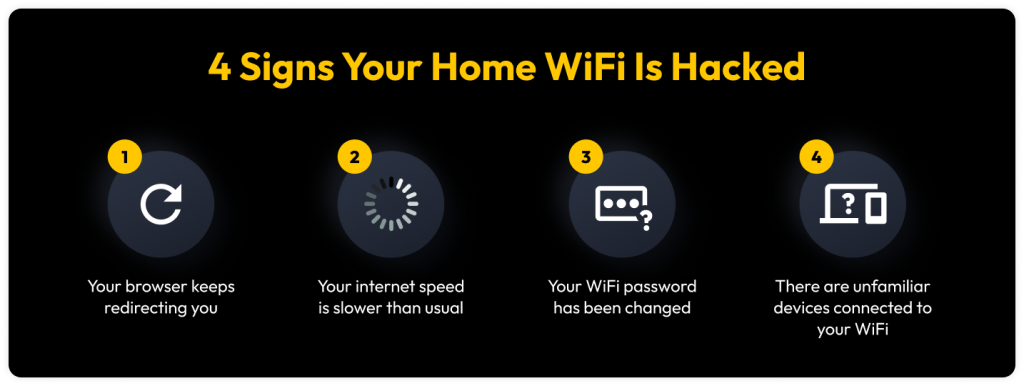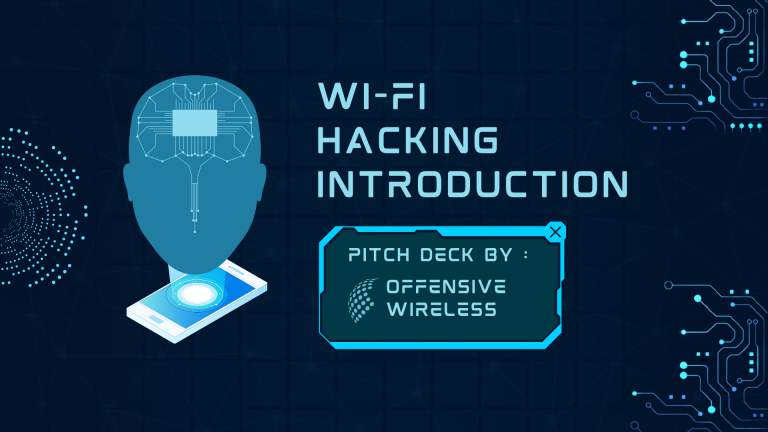WiFi is a part of our daily lives, helping us stay connected at home, work, and in public places. But have you ever wondered if someone is using your WiFi without permission? Or struggled to remember your own WiFi password?
Keeping your WiFi network secure is important to protect your personal data and prevent slow internet speeds caused by unauthorized users. In this guide, we’ll walk you through simple steps to secure your WiFi, recover a forgotten password, and check if someone else is using your network.
What is WiFi Password Hack?
“WiFi password hack” refers to the act of gaining access to a WiFi network without authorization. This can involve using various techniques to crack or bypass security measures. However, attempting to access someone else’s WiFi without permission is illegal and unethical in most countries.
On the other hand, ethical hacking is used by cybersecurity professionals to test network security and strengthen protection against real threats. If you’re looking for ways to recover your own forgotten WiFi password or secure your network from hackers, there are legal and ethical methods to do so.
In the next sections, we’ll explore how to protect your WiFi, recover lost passwords, and detect unauthorized users on your network. Stay secure and keep your connection safe! 🚀
Why is WiFi Security Important?
Securing your WiFi network is crucial for several reasons. A weak or unprotected WiFi can lead to slow internet, data theft, and even legal trouble if someone misuses your network. Here’s why you should take WiFi security seriously:
Protects Your Personal Data 🛡️
Hackers can intercept your online activity, steal passwords, and access sensitive information like bank details or personal messages.
Prevents Unauthorized Access 🚫
If someone secretly connects to your WiFi, they can slow down your internet speed and even use your connection for illegal activities.
Avoids Cyber Threats & Attacks ⚠️
A weak WiFi network can be an easy target for malware, phishing, and cyber attacks that could compromise your devices.
Keeps Your Smart Home Safe 🏠
Many homes today have smart devices (like cameras, door locks, and thermostats) connected to WiFi. If your network is hacked, your entire home security could be at risk.
Saves You from Extra Costs 💰
If unauthorized users consume your internet data, you might face higher bills or slower speeds, especially on limited data plans.
Stay Secure!
Taking simple steps—like setting a strong password, enabling encryption, and monitoring connected devices—can keep your WiFi safe from threats. In the next sections, we’ll explore how to protect and manage your WiFi effectively.

Step-by-Step Guide: Wi-Fi Hacking: How It Works,
Hackers often target Wi-Fi networks to gain unauthorized access, steal data, or use your internet without permission. Understanding how Wi-Fi hacking works can help you take the right steps to protect your network. Here’s a step-by-step guide explaining how hackers attempt to break into networks and, more importantly, how you can stay secure.
Step 1: How Hackers Identify Weak Networks
🔹 How It Works:
Hackers scan for Wi-Fi networks using tools that detect weak security settings, such as networks with:
- Weak passwords or default credentials
- No encryption or outdated security (like WEP instead of WPA2/WPA3)
- Open public Wi-Fi without authentication
✅ How to Stay Secure:
- Always use a strong, unique Wi-Fi password (avoid simple ones like “123456” or “password”).
- Use the latest WPA3 or WPA2 encryption in your router settings.
- Never leave your Wi-Fi network open without a password.
Step 2: How Hackers Try to Crack Wi-Fi Passwords
🔹 How It Works:
If a hacker finds a password-protected network, they may try to crack it using:
- Brute force attacks – Trying different password combinations repeatedly.
- Dictionary attacks – Using a list of common passwords to guess yours.
- Capturing handshake data – Intercepting Wi-Fi signals to analyze and crack passwords.
✅ How to Stay Secure:
- Create a long, complex password with a mix of letters, numbers, and symbols.
- Change your Wi-Fi password regularly to prevent unauthorized access.
- Use MAC address filtering to allow only trusted devices on your network.
Step 3: How Hackers Exploit Public Wi-Fi Networks
🔹 How It Works:
Public Wi-Fi in places like cafés, airports, and hotels is often unsecured, making it easy for hackers to:
- Intercept data using “Man-in-the-Middle” attacks.
- Create fake hotspots that look like real ones, tricking users into connecting.
- Monitor traffic and steal login credentials, credit card info, and personal data.
✅ How to Stay Secure:
- Avoid connecting to public Wi-Fi for sensitive activities like online banking.
- Use a VPN (Virtual Private Network) to encrypt your internet traffic.
- Turn off auto-connect for public Wi-Fi networks on your phone and laptop.
Step 4: How Hackers Use Malware & Phishing on Wi-Fi Networks
🔹 How It Works:
Once hackers access a network, they may use:
- Malware injection – Installing malicious software on connected devices.
- Phishing attacks – Tricking users into entering passwords on fake websites.
- Packet sniffing – Monitoring data flowing over the network to steal sensitive info.
✅ How to Stay Secure:
- Keep your router firmware updated to patch security flaws.
- Use firewall and antivirus software to protect against malware.
- Be cautious of suspicious links and pop-ups while browsing.
Step 5: How to Monitor and Protect Your Wi-Fi Network
🔹 How to Stay Secure:
Check connected devices regularly in your router settings to spot unknown users.
Disable WPS (Wi-Fi Protected Setup) – It can be exploited by hackers.
Set up a guest network for visitors instead of sharing your main Wi-Fi.
Turn off your Wi-Fi when you’re not using it for long periods (like vacations).
Common FAQs About WiFi Security
How can I check if someone is using my WiFi?
You can log into your router’s settings and check the list of connected devices. If you see unfamiliar devices, someone may be using your WiFi without permission.
What should I do if I forgot my WiFi password?
You can find your saved WiFi password on your computer (if previously connected) or check your router’s settings. If needed, you can reset the router to set a new password.
How do I make my WiFi more secure?
Use a strong password, enable WPA3 or WPA2 encryption, turn off WPS, and regularly check for unknown devices on your network.
Can someone hack my WiFi?
If your WiFi has a weak password or outdated security settings, it can be vulnerable to attacks. That’s why it’s important to update your password and security settings regularly.
What happens if someone steals my WiFi?
If unauthorized users are on your network, your internet speed may slow down, and they could access your personal data or even use your connection for illegal activities.
Should I hide my WiFi name (SSID)?
Hiding your WiFi name adds a small layer of security, but it’s not a foolproof method. It’s better to focus on strong passwords and encryption to keep your network safe.
How often should I change my WiFi password?
Changing your password every few months (or anytime you suspect unauthorized access) is a good practice to keep your network secure.
now write short, concise and user friendly conclusion on this! write in easy and user friendly language.
Conclusion
Your WiFi is the gateway to your personal and digital life, so keeping it secure is essential. A weak or unprotected network can lead to slow internet, stolen data, and even security risks. But with a strong password, encryption, and regular security checks, you can protect your network from unwanted access.
If you ever forget your WiFi password, you can easily recover it through your router settings or connected devices. Stay alert, check for unknown users, and update your settings regularly to keep your network fast, safe, and secure.
Bonus Tips for Extra WiFi Security!
✅ Use a Strong Password – Create a long and unique password with a mix of letters, numbers, and symbols. Avoid easy-to-guess passwords like “123456” or “password.”
✅ Enable WPA3 or WPA2 Encryption – This ensures your data is protected from hackers. Always avoid outdated security types like WEP.
✅ Turn Off WPS (Wi-Fi Protected Setup) – WPS makes it easier to connect but also easier for hackers to break in. Disable it for better security.
✅ Check Your Router Logs – Your router keeps a list of connected devices. Check it regularly to spot any unwanted users.
✅ Limit the Number of Connected Devices – Some routers let you set a limit on how many devices can connect at once. This helps prevent unauthorized access.
✅ Create a Guest Network – If visitors need WiFi, set up a separate guest network with limited access. This keeps your main network safe.
✅ Restart Your Router Regularly – A simple restart can help clear unwanted connections and refresh security settings.
✅ Update Your Router Firmware – Manufacturers release updates to fix security vulnerabilities. Check for updates to keep your network safe.
✅ Use a VPN for Extra Security – A VPN encrypts your internet traffic, keeping your online activities private—even on public WiFi.
